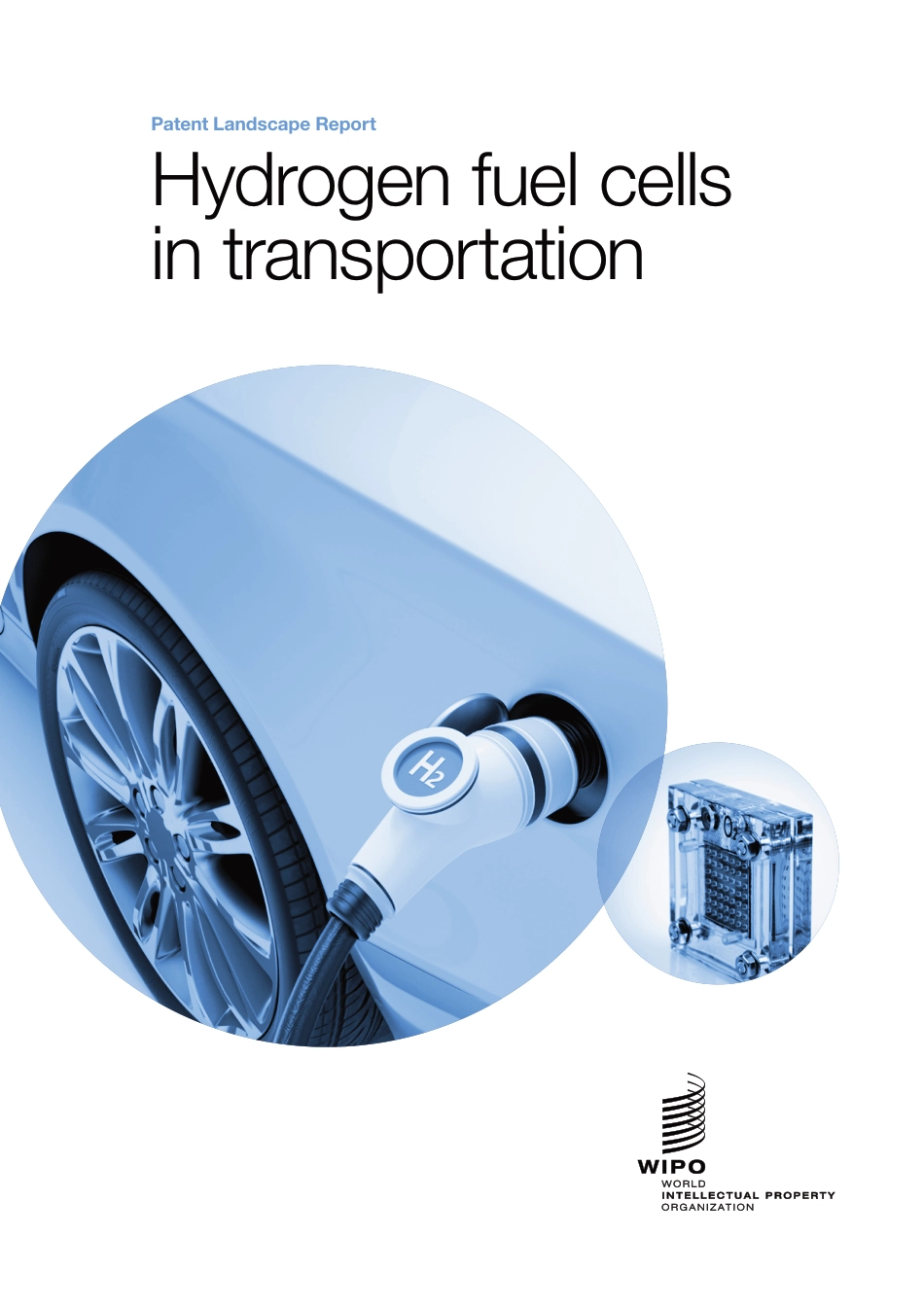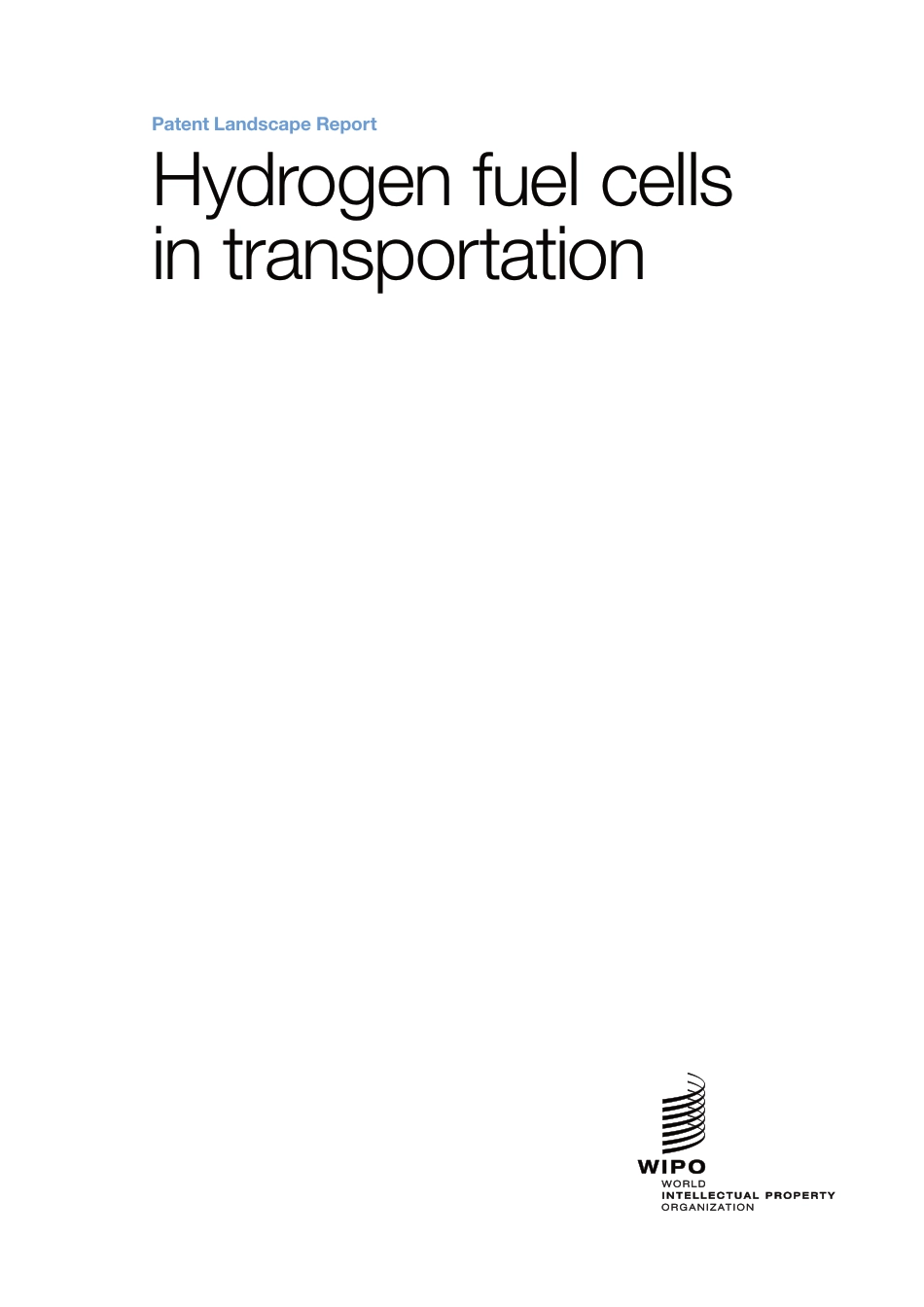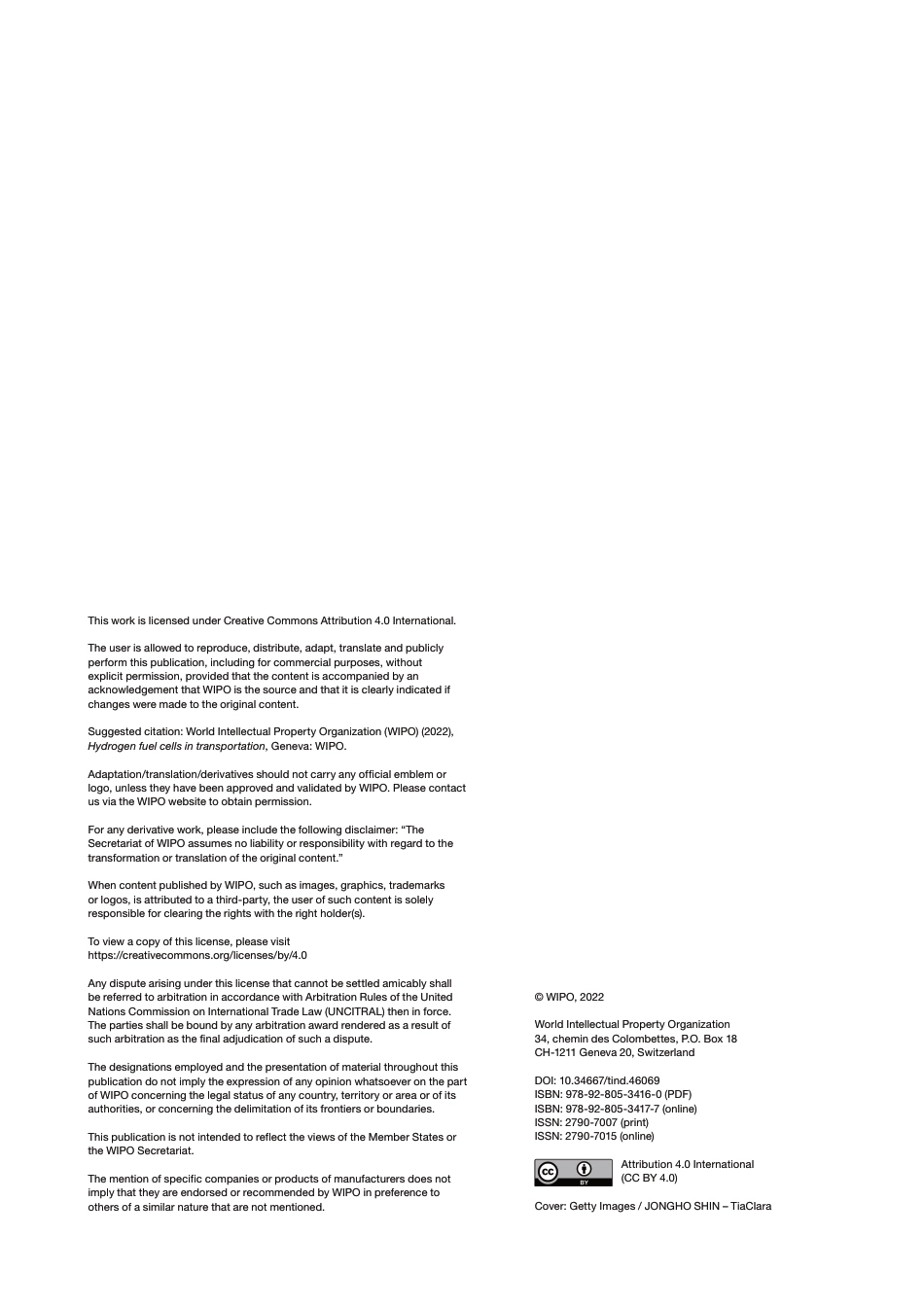Patent Landscape ReportHydrogen fuel cells in transportationPatent Landscape ReportHydrogen fuel cells in transportationThis work is licensed under Creative Commons Attribution 4.0 International. The user is allowed to reproduce, distribute, adapt, translate and publicly perform this publication, including for commercial purposes, without explicit permission, provided that the content is accompanied by an acknowledgement that WIPO is the source and that it is clearly indicated if changes were made to the original content.Suggested citation: World Intellectual Property Organization (WIPO) (2022), Hydrogen fuel cells in transportation, Geneva: WIPO.Adaptation/translation/derivatives should not carry any official emblem or logo, unless they have been approved and validated by WIPO. Please contact us via the WIPO website to obtain permission. For any derivative work, please include the following disclaimer: “The Secretariat of WIPO assumes no liability or responsibility with regard to the transformation or translation of the original content.”When content published by WIPO, such as images, graphics, trademarks or logos, is attributed to a third-party, the user of such content is solely responsible for clearing the rights with the right holder(s).To view a copy of this license, please visit https://creativecommons.org/licenses/by/4.0Any dispute arising under this license that cannot be settled amicably shall be referred to arbitration in accordance with Arbitration Rules of the United Nations Commission on International Trade Law (UNCITRAL) then in force. The parties shall be bound by any arbitration award rendered as a result of such arbitration as the final adjudication of such a dispute.The designations employed and the pres...



